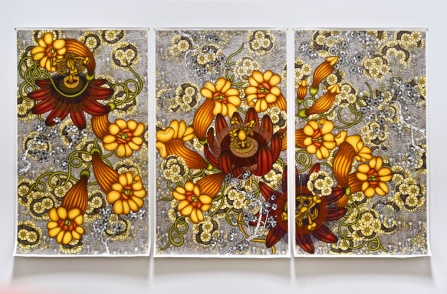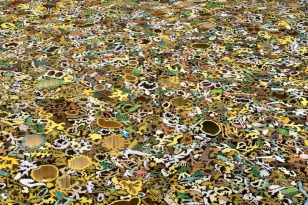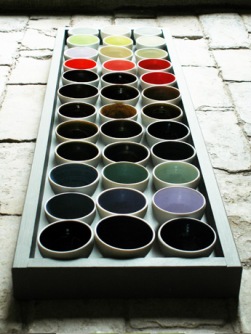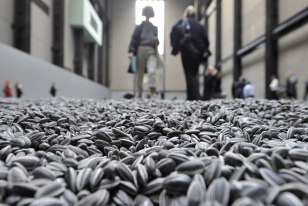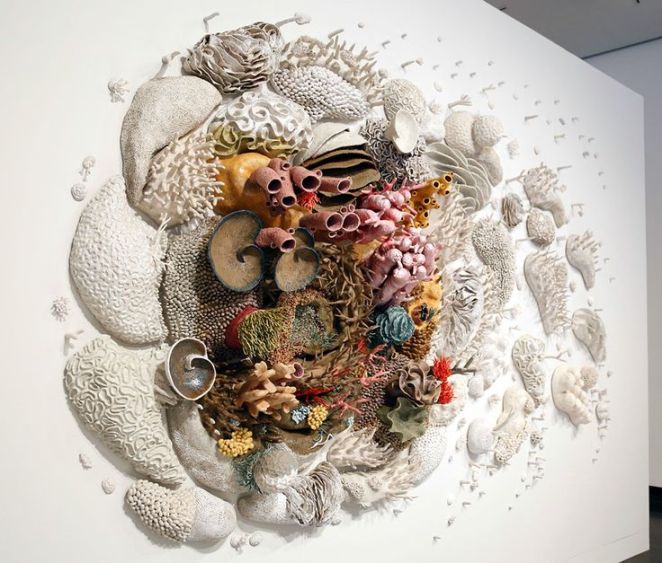Being an artist I’ve always naturally linked art as my way of expressing my identity, and I am very familiar with the long running discussion of art as a means of creating identity, and also this concept of the “artistic identity”.It was fascinating to see just how prevalent this theme has been throughout virtually all of art history, from ancient Greeks to contemporary artists. What I felt was most important is how the portrayal of identity through art is continually changing as a reflection of the current environment. As art does offer the possibility of original creation, in that mediums such as clay can allow you to create nearly anything out of nothing, this may be why identity has always been at the center of art. The historical context of the article made more aware of how art throughout history has been being reinterpreted and re-imagined to create or explore the identity of various generations and cultures. keep reading
Exercise #4 Reflection
Initially I didn’t think that I would find much personal use for an artist website being that I still think of my work as being in it’s infancy in comparison to practicing contemporary ceramicists. Also being so focused on my current practice as a student I was unsure if I would even have enough information to designate an actual website. However I’m pleasantly surprised at the finished product because I feel as if it effectively represents not only myself but also my artistic sensibilities and influences. While I wanted it to appear professional and polished, I still wanted it to read more as a student ceramicist or ceramicist in progress website, as opposed to an art with a capital “A” ceramicist’s studio site. The main things I struggled with were my C.V. and my artist statement and lessons for artists in network-media ecology. I don’t have any professional or even apprenticeship experience within my field, so I think my C.V. page is seriously lacking in terms of professional experience. Writing artist statements has always been my absolute least favorite thing to do because I can’t sum up my work or myself as an artist in a paragraph or page and nor would I want to. They simply hold too much weight, but I digress. Naturally I struggled most with the statement, and although it comes off as slightly cliche and self-assured I think it may have been one of my more successful attempts. I also encountered a fair amount of difficulty in writing and integrating the lessons for artists page into my website, as I had initially felt it would be out of place especially on my artist website because I’m greatly influenced by mid-century artwork, life, design, and architecture.
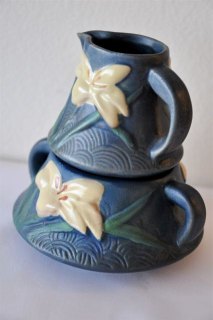 I tried to integrate it into my website not as lessons but as advice from a fellow ceramicist because I felt it the most effective and natural way to engage my intended audience as the ceramic field is a communally based art field. Although I’m not sure if I had properly discussed a guide for artist’s “online presence” after rereading it, because I’ve thought of a fair amount of lessons and insights I had forgotten to discuss about not only what it means to be an artist in the 21st century, but really an artist in any century. The majority of these insights were gained with completing the three class projects, and with the completion of the third project I had developed a new understanding and approach to both the field and my own ceramics. In retrospective I would have liked to have incorporated this “new approach” as a lesson on my site, as it entails that to be an artist capable of growth and development creatively you can’t simply ignore or evade the use and presence of technology and media within art and everyday life. Ubiquitous computing, while personally I view as a serious detriment to our culture and society, is a reality of life in 21st century America. Due to it’s effect on our society’s perception and experience, we as artists must accommodate for and be conscious of this in our practices if public display is the end goal. But then again, that’s just the opinion of one amateur ceramicist and because of that I felt too preachy and insistent including all of my insights about artists and media ecology. However over all I felt my website was successful in terms of using my recently gained knowledge of communicating with my audiences through digital media to create a personal/professional artist website. Also in the process I’ve learned a lot about my professional artist side, which I wasn’t even aware existed.
I tried to integrate it into my website not as lessons but as advice from a fellow ceramicist because I felt it the most effective and natural way to engage my intended audience as the ceramic field is a communally based art field. Although I’m not sure if I had properly discussed a guide for artist’s “online presence” after rereading it, because I’ve thought of a fair amount of lessons and insights I had forgotten to discuss about not only what it means to be an artist in the 21st century, but really an artist in any century. The majority of these insights were gained with completing the three class projects, and with the completion of the third project I had developed a new understanding and approach to both the field and my own ceramics. In retrospective I would have liked to have incorporated this “new approach” as a lesson on my site, as it entails that to be an artist capable of growth and development creatively you can’t simply ignore or evade the use and presence of technology and media within art and everyday life. Ubiquitous computing, while personally I view as a serious detriment to our culture and society, is a reality of life in 21st century America. Due to it’s effect on our society’s perception and experience, we as artists must accommodate for and be conscious of this in our practices if public display is the end goal. But then again, that’s just the opinion of one amateur ceramicist and because of that I felt too preachy and insistent including all of my insights about artists and media ecology. However over all I felt my website was successful in terms of using my recently gained knowledge of communicating with my audiences through digital media to create a personal/professional artist website. Also in the process I’ve learned a lot about my professional artist side, which I wasn’t even aware existed.
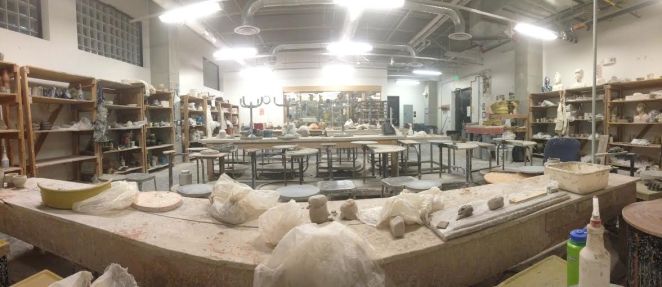
Exercise #3: Art Praxis Update Proposal

“Everything Is Not As It Seems”, 2009, Jeanne Quinn, 138″ x 204″ x 288″
It’s evident that our culture and society in 21st century America revolves around technology and digital media, now to the point which every minute of the day everywhere you go, anyone may have immediate access to a computer and internet be it a laptop, smart phone, or tablet. This concept of society and everyday life being inundated with computer technologies, otherwise known as ubiquitous computing, has resulted in drastic effects on our social, cultural, and physical environments and consequently the way 21st century audiences now experience and perceive art. Its clear that in order for artists to continue expanding and developing their respective fields, we must consider how we can adapt our artwork to engage our changing audience of technophiles. Many contemporary ceramicists are already integrating various modeling software and technologies into their practice such as 3D ceramics printing, laser cutting, rapid prototyping, and digital fabrication. The advent of these technologies have assisted in facilitating a new movement in contemporary ceramics involving the utilization of computer based manufacturing and digital modeling technologies in traditional ceramic practices.
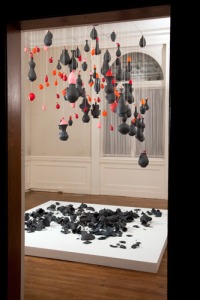
“A Thousand Tiny Deaths”, 2009, 13′ x 8′ x 8′
This past decade has arguably been the field’s most progressive and innovative period to date, as reflected in the work of contemporary ceramicists such as John Balistreri and Jeanne Quinn. With the current state of the field being already so advanced in terms of praxis it may seem as if there is little left to update, however upon observing a recent MFA exhibit at the CU Art Museum, it has come to my attention that while ceramic technique and technology have been modernized, display practices have predominantly remained the same. Although the exhibit featured all 2D works with the majority incorporating some form of digital media, it was my personal interaction and experience with the artworks themselves which made the concepts and themes so powerful and the pieces and installations truly memorable. It is this physical engagement of the audience is absent in most ceramic exhibits and installations as it’s very nature is fragile and breakable.
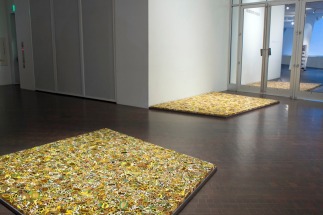
“Footing”, 2012, Nathan Craven, 458” x 98” x 2”
However with new design technologies allowing the production of mass amounts of ceramic objects in virtually any form desired, an update in display practices of contemporary ceramics may be to use their display or installation as an interactive environment. In terms of application there are two primary aesthetic choices which facilitate this audience interaction, these being scale and placement. For instance life sized installations have an inherent tactility which may reassure or prompt viewers interact with an object of average, everyday size. While not exactly the same, the 2012 installation “Footing” by Nathan Craven is reminiscent of using life sized objects to successfully achieve audience interaction as the installation is confined to the floor and consists of two massive squares created by faceting various uniquely shaped ceramic forms.
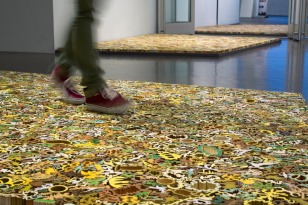
“Footing”, 2012, Nick Craven, 458” x 98” x 2”
The placement is critical as it facilitates immediate audience interaction because of its proximity. Placement is critical in terms of engaging or displacing an audience and is many times a missed opportunity for interaction which we should be taking advantage of. By this I mean we should be thoughtfully considering placement or composition in regards to viewer effect in contemporary installation and display practices by placing pieces or installation components in highly accessible areas. Accessible areas being those which are close in physical proximity to the viewer such as the floor or anywhere from the head down, as traditionally displayed objects are at eye-level, so even if its not displayed on a pedestal being at eye-level innately suggests a no touch gallery.
Two ideal examples of this practice of accessible display prompting viewer interaction are Mirka Golden-Hann’s 2013 installation “Interactive Colour” and Ai Weiwei’s 2012 “Sunflower Seeds”. Both installations are organized in a manner in which the audience is automatically part of the installation through a forced interaction with the installation’s various components because of their floor placement. While these are merely a few examples, it is evident that the ceramic field is just now beginning to update and experiment with display practices and audience engagement, however if ceramicists were to incorporate the new design technologies into their process, they can then create forms of any shape, size, and amount which may be used to create an interactive environment through large-scale, life sized installations or displays which inherently prompt viewer interaction. While these are merely a few examples, it is evident that the ceramic field is just now beginning to update and experiment with display practices and audience engagement, however if ceramicists were to incorporate the new design technologies into their process, they can then create forms of any shape, size, and amount which may be used to create an interactive environment through large-scale, life sized installations or displays which inherently prompt viewer interaction.
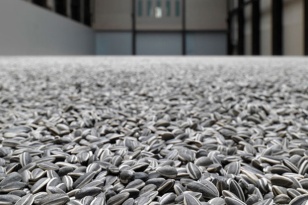
“Sunflower Seeds”, 2012, Ai Weiwei
CU Boulder 2015 MFA Show Review
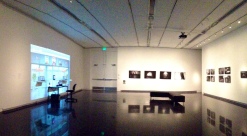
A recent art exhibit which I had the privilege to attend was the University of Colorado at Boulder’s annual MFA show is currently being held in the CU Boulder Art Museum. Upon entering the gallery space it initially appears to be showcasing artists primarily using digital or media based installation artwork, as the most prominent piece’s in the massive white walled room are being projected on monitors. As this occurs when first entering the gallery space with no visible prelude or context regarding the show’s content, it results in an uninviting and slightly unsettling atmosphere for any technophobe in the audience. However after observing, or more experiencing, the first group of installations, the viewer becomes immersed in a strong narrative and is aware of a new theme in subject matter, this being world cultures. This creation and audience immersion in these different cultures which are most likely extremely foreign to the average viewer is achieved through the very medium which I felt depersonalized them, digital or media based installation. All but one of the artworks on display incorporated some form of digital installation which I felt successfully reinforced the piece’s conceptuality and essentially brought the piece to life. This is exemplified in Shokoofeh Z. Dezfuli’s piece Molt, in which the primary part of the installation is a large digital print on fabric and is relatively ambiguous in terms of meaning until the viewer sees the accompanying screen and information card which serves to explain the artist’s exact intention. Several of the piece’s also required viewers to physically interact with the artwork in order to properly view it, such as the virtual reality piece DPRK Metaverse by Melanie Clemmons. This audience interaction is what made the piece’s concepts not only understandable but memorable. As the majority of the artworks addressed serious cultural issues or stereotypes, and I felt this physical experience of viewing certain pieces resulted in a stronger connection by the individual audience member to the piece, and consequently its message. Even days later the issues addressed in many of the pieces continue to resonate with me and I’m sure many other audience members. This unexpected reaction to artworks which I would personally not be drawn to ordinarily speaks not only to the incredible skill of these artists, but also the trajectory of their particular field’s, mainly film or digital installation. From the show it is clear that this medium is being utilized in creative and provocative ways to comment on issues or cultures which are too complex to successfully address with many other traditional mediums. The show’s overall success in facilitating social consciousness through art is what impressed me the most, as I feel the achievement of this while not appearing disingenuous or biased is incredibly difficult. Overall the 2015 CU MFA show was an impressive showcase of not only phenomenal artworks and artists, but artists who are innovative in terms of their approach to their respective mediums, display practices, and creativity. Most importantly they are just a few of the artists to watch in shaping the future of their fields.
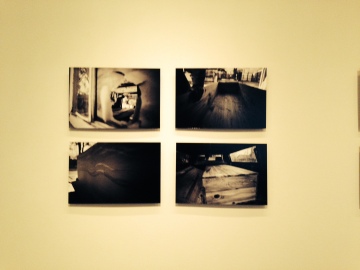
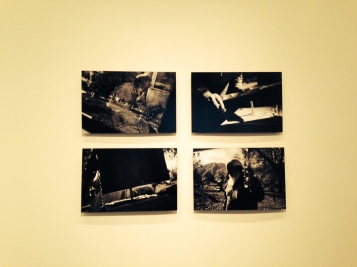
4/08/2015
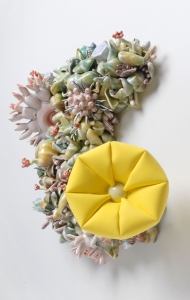
“Synthetic Reality”, 2006, Susan Beiner
The review which I’m modeling my own on has several key components which I will be adapting to my own art review, as I feel they are what makes the “No Rules” review successful. As the review is concise the author made critical decisions in regard to certain review conventions and components which are best suited to the particular show being reviewed, for example the museum space which the exhibition was held in wasn’t necessarily important or relevant to the actual work, so the author only touched on describing the space in order to provide the reader with some basic context. However, because the shows concept and message was more important than the actual setting the author includes this in the introduction in order to immediately inform the reader of the intention/what to expect from the featured artists.
“No Rules showcases 12 artists… who have taken their material and explored it for its qualities rather than its function, removing the “rules” for how clay is to operate in art and the public sphere” (Willis, p. 52-53).
As many art shows have a particular theme or concept which they embody, I think its necessary to describe this in the introduction of any art review as its critical to the reader’s understanding of the show and the artworks. Willis also chooses to focus on individual artists instead of the show as a whole, which at first glance I didn’t much like but I now feel actually makes the review more successful. I think it more effectively depicts the emotion and tone of the artworks, and therefore the show. Willis actually focuses on the art as art, as opposed to discussing it as art with a capital “A”, and the conventions/choices she made to achieve this have been very helpful in writing my own review.
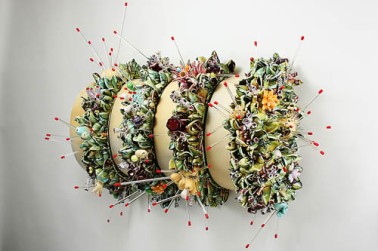
“Artificial Selection”, 2011, Susan Beiner
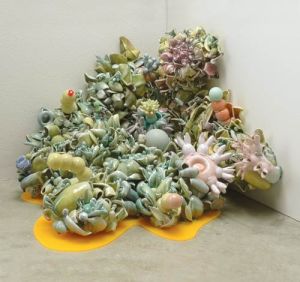
“Rather Than Obliquely Encoded”, 2005, Susan Beiner
Source:
- Willis, Emily Schroeder. “No Rules: Contemporary Clay.” Ceramics Monthly (2013): 52-56. Academic Search Premier. Web. 10 Apr. 2015.
Art Event & Sample Review
The art review I chose to model mine after is a review of one of my favorite ceramic exhibitions which I recently found on the Academic Search Premier database. The review is titled “NO RULES: Contemporary Clay”, and was written by Emily Willis and published in the 2013 edition of Ceramics Monthly. The art event I will be attending is at BMoCA on Tuesday, April 7th from 6:30 to 8:30. The event is called BMoCA + Swoon: Berndnaut Smilde.
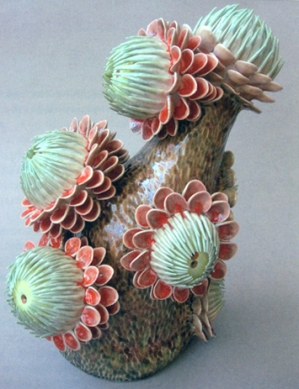
“Protea Mus Auris”, Chris Garofalo, 2010
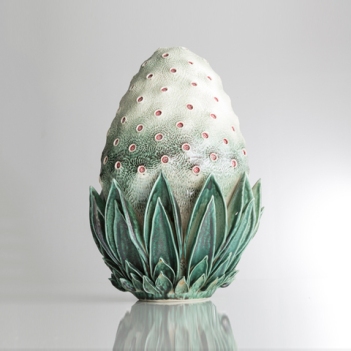
“Stomata Melongene”, Chris Garofalo 2012
Sample Review Link:
Ceramic Artistic Inquiry
In contemporary ceramics artistic inquiry can be seem as using various ceramic techniques and practices to explore or engage forms of academic research. For example, ceramicists examine the broken ceramic pieces or objects found in an archeological dig and from there, they recreate objects used thousands of years ago which would have otherwise been lost.
Tumblr Art Symposium: “Revisiting Tumblr as Art” Article Review
The Hyperallergic Tumblr Art Symposium article I read was, “Revisiting Tumblr as Art”, by Ben Valentine.This article provides valuable insight into the ways which my curatory group, intermedia, can make our Tumblr posts and entire Tumblr site more effective. Valentine brings to light several issues with Tumblr art or art tumblelogs due to Tumblr’s layout, aesthetics, and settings. As I’ve been using social media or other web platforms since the early 2000’s, the dashboard feed layout is commonplace to me, and I’ve never really considered how or even if it effects my viewing experience. But as described by Valentine, it is the immediacy and endlessness nature of the Tumblr dashboard feed layout which prompts viewers to continuously scroll, only glancing at images which happen to catch their eye. This is a major issue for Tumblr art or art tumblelogs because it completely undermines the art and artist, which are the actual focus of the post.
“The experience of endlessly scrolling through the feed, watching thousands of images fly past, only adds to the viewer feeling less inclined to give any one image more than a few seconds’ worth of attention.”
(Valentine, “Revisiting Tumblr as Art”)
The effect of Tumblr’s layout on our viewer’s experience is something I had overlooked, however it is actually a critical component the Intermedia group must consider when creating posts. There are several changes I feel the group can implement to counteract the negative effects of the endless dashboard feed, such as having immediately captivating and relevant titles on all of our posts, which will make them more substantial as opposed to the typical image consumed Tumblr post. Also, if the group members display all of the artworks information directly underneath the artwork, it will give the artist the recognition they deserve, and also because this information is often missing or hidden from a post, by us including this artwork information we will be viewed as a professional and artistically knowledgeable source of credible information.
This article completely refocused my curatory practices by examining the typical viewer experience of tumblr and it’s implications. My refocused approach is to think critically about the content of posts, and also the visual layout of the posts and actual site, while always being conscious of it’s potential effect on our viewer’s perception.


